Cardiff Bay: What has 30 years of development achieved?
- Published
What has been achieved in 30 years of redevelopment in Cardiff Bay?
Future development of Cardiff Bay needs a more coordinated approach to ensure its success, the man behind its reinvention 30 years ago has said.
Lord Crickhowell has hailed the overall regeneration of the former derelict docklands as a major success.
But he is fiercely opposed to the latest plans to redevelop land for flats, including a 24-storey building.
Three decades after he sparked plans for one of the biggest overhauls the city has seen, what has been achieved?

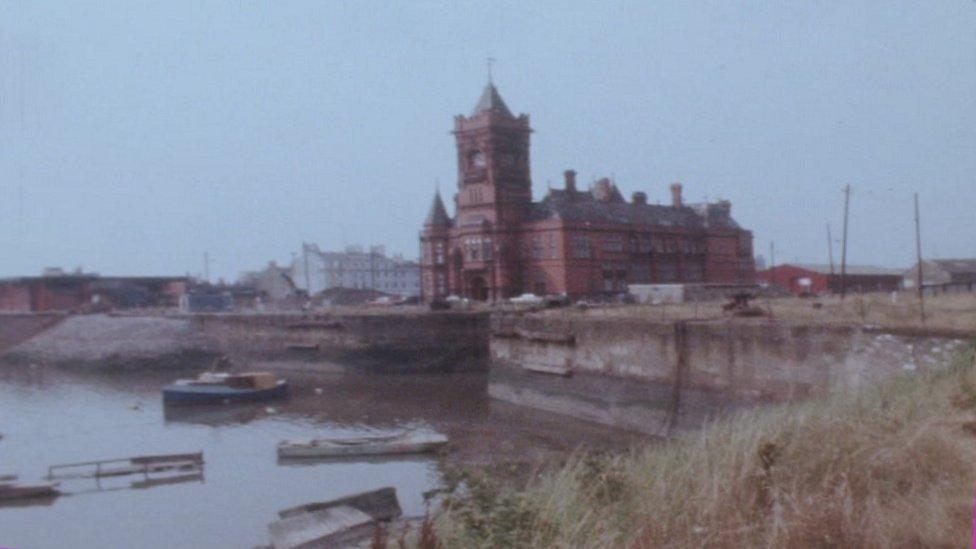
Cardiff Bay waterfront in 1977 - derelict before regeneration
Once the epicentre of Wales' booming coal and export industries, by the 1980s, Cardiff Bay had become an abandoned wasteland of derelict docks and mudflats.
A victim of a dramatic fall in trade following World War Two and competition from other ports saw its decline and a plan was put in place to bring it back to life and reconnect it to the city centre.
The Cardiff Bay Development Corporation (CBDC) was set up in April 1987 to regenerate the 1,100 hectares (2,700 acres) of dockland between Cardiff and Penarth.
Part of the British government's Urban Development Programme - to regenerate deprived areas of inner cities - its aim was to "put Cardiff on the international map" and boost the image and economic wellbeing of the area.
Its main objectives were to:
promote development and provide an environment where people want to live, work and play
reunite the city centre with its waterfront
build a mixed development to create jobs
achieve the highest standard of design and quality in its development and investment
establish the area as a recognised centre of excellence in urban regeneration
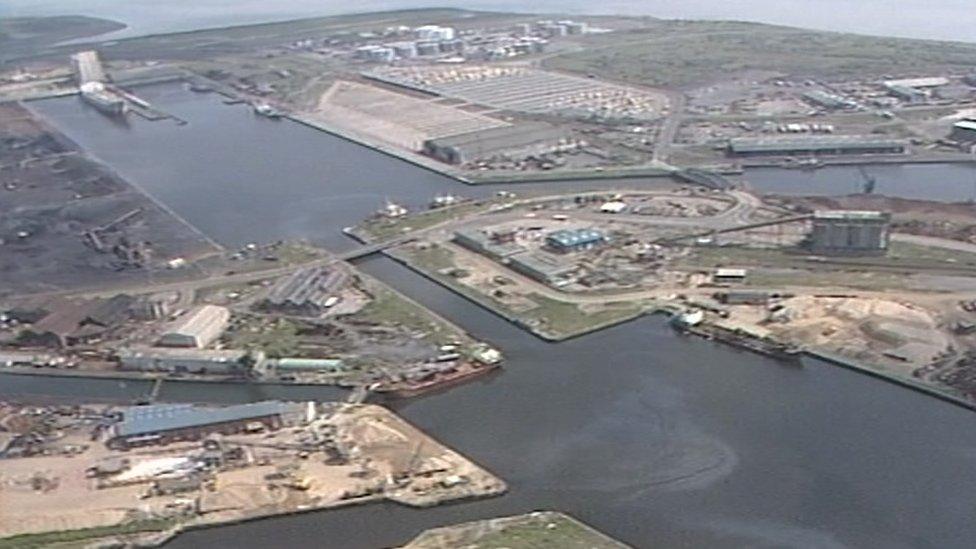
Cardiff Bay in 1987

The main catalyst for regeneration came with proposals for a barrage.
The structure was needed to trap water from the extremely tidal Severn estuary, without which the bay would be without water for much of the day at low tide.
But it was not without controversy.
Many residents, politicians and conservationists were against the plan with worries including the potential flood risk to homes and the loss of habitat for wading birds and migrating wildlife.
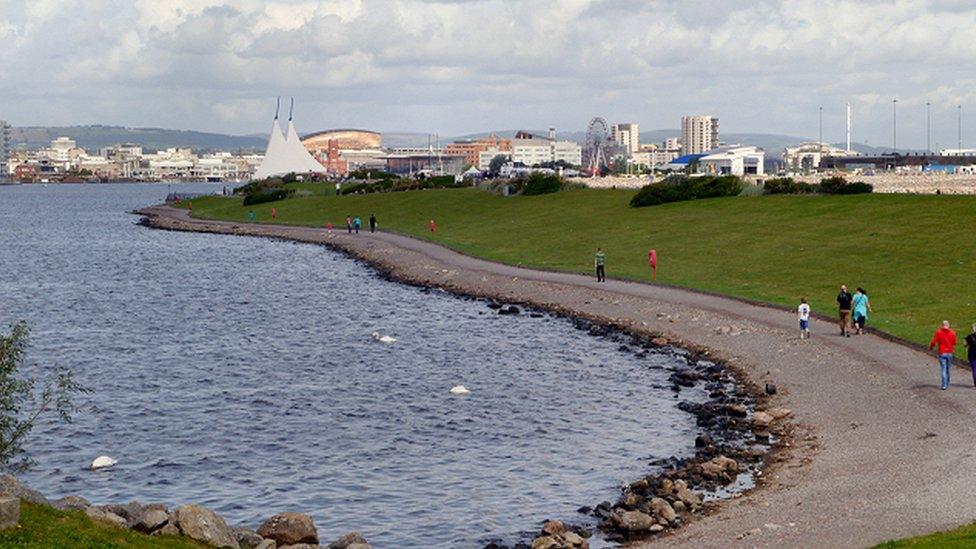
The barrage is now a big draw for visitors
Others were concerned about its £220m cost - including then-Prime Minister Margaret Thatcher who claimed the plan "just hasn't been worked out enough", and Labour MPs such as future First Minister Rhodri Morgan.
But after four years of political battles, five failed parliamentary bills and a resignation threat from then-Welsh Secretary Nicholas Edwards, now Lord Crickhowell, work began in 1994.
It was completed in 1999, external and was one of the biggest engineering projects in Europe, creating a permanent 200-hectare freshwater lake.

The barrage is 1.1km long and extends from Cardiff docks in the north to Penarth
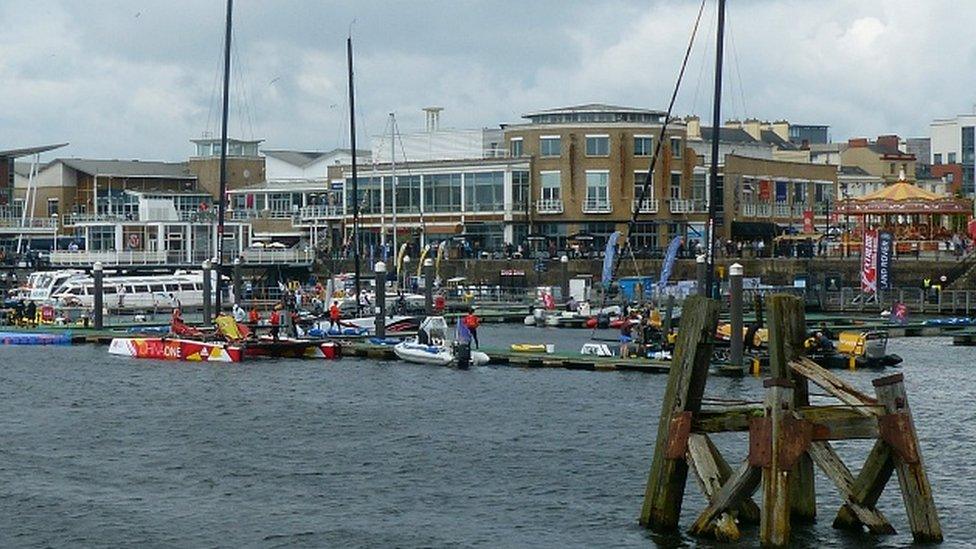
Mermaid Quay is home to shops, restaurants and bars
Along with it came the shops, bars and restaurants of Mermaid Quay that overlook it and later the construction of Lloyd George Avenue linking the waterfront with the city centre.
Recalling the cold, wet day when he first went to assess what could be done to revitalise the area, Lord Crickhowell remembers a "vast area of dereliction".
He said despite the then-South Glamorgan Council showing confidence in the bay by building its County Hall headquarters at Atlantic Wharf in 1981, the majority of the area was not in use.
He said: "I suddenly realised that what we want to be doing was bringing people back to live and work and play in the area.
"I think it [Cardiff Bay] has been an immense success. There's a whole generation who has no idea what it was like before.
"We cannot contemplate Cardiff without the bay. It's the centre of the city - it's highly successful.
"And all the critics... concerns about ground water and possible flooding and anxieties - all that was quite unjustified.
"The barrage has protected Cardiff from flooding and tidal surges. It's provided protection and not a threat."
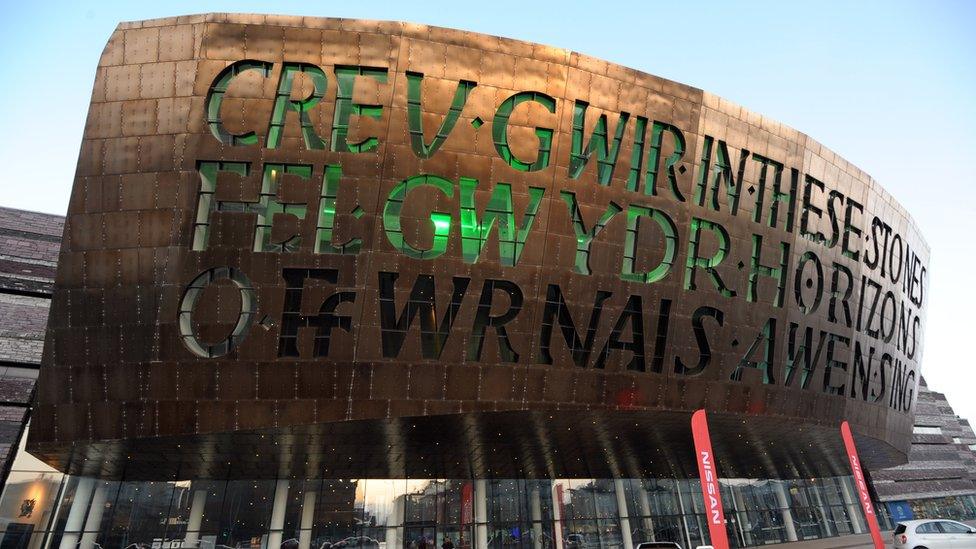
Wales Millennium Centre replaced earlier plans for a Cardiff Bay Opera House
Further expansion came in the years that followed, namely in the form of thousands of flats - a trend that continues in earnest today - along with a mass of office space.
But its skyline was to change further in 2004 and 2006 with the opening of what could now be argued are two of its most iconic buildings.
The first was Wales Millennium Centre, external - a dedicated opera and arts house - which opened following a 20-year campaign.
But much like the barrage before it, it too was dogged with problems.
It began in 1995 when an international contest was launched to find an architect for what was then called the Cardiff Bay Opera House.
Iraqi-born Dame Zaha Hadid won but her project was later considered too big and risky, and it was rejected.
Further concerns about the subsequent building's cost saw its size cut but it eventually opened in 2004.
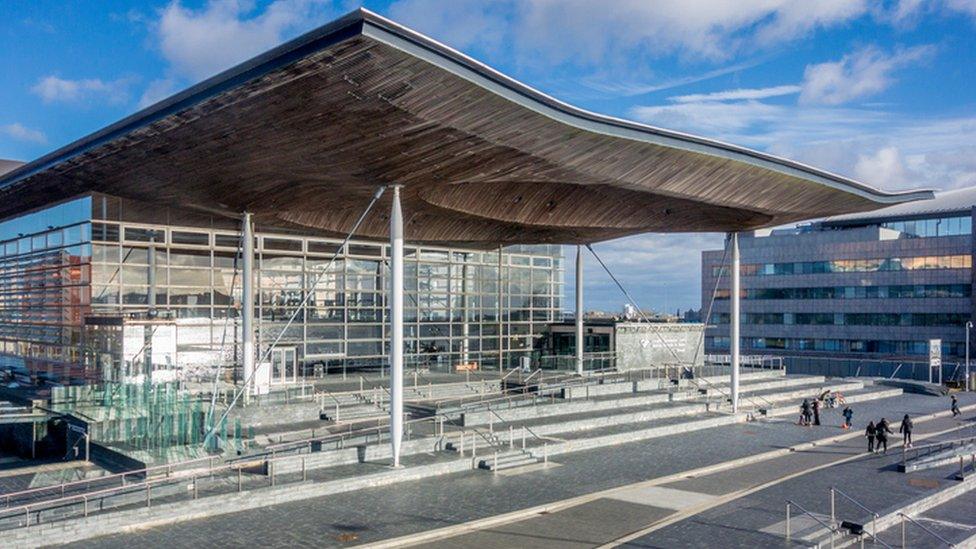
The Senedd was opened by the Queen in 2006
At the same time plans for a new home for assembly members were being developed following the formation of the National Assembly for Wales in 1999.
As well as being designed with the aim of creating the most distinctive building in the country, the Senedd has won numerous design awards and achieved the highest sustainability award for a new-build in Wales.
Designed by architects Lord Richard Rogers and Ivan Harbour, who wanted to create an accessible building that appeared to rise on a plinth of Welsh slate from Cardiff Bay, it opened in 2006.
Both buildings were eventually completed after the CBDC was wound up in 2000, but supporters believe the organisation paved the way for the bay's development which continues today.
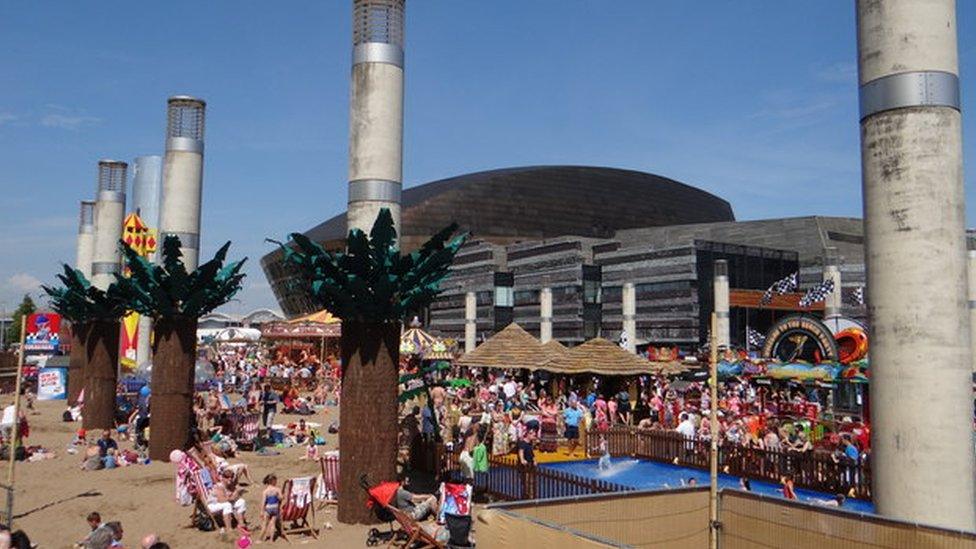
Cardiff Bay now hosts many events including a beach at Roald Dahl Plass during the summer
Roger Thomas, former chairman of Cooke and Arkwright chartered surveyors, which helped advise on the feasibility of the early redevelopment, said the CBDC had left a legacy to be proud of.
"I hate to think what Cardiff would be like if it hadn't been done," he said.
"There was a lot of political opposition to the barrage and during the next 20 years of its life it [the bay] went through economic recessions, that doesn't help anyone, but it has put Cardiff on the European and world map."
He said while early ideas to build double the four billion square feet of office space eventually developed were rightly stood down, some people's fears that too many flats were built too quickly were unfounded.
He said the "completely disregarded" area around Mount Stuart Square had been "vastly improved" but admitted one "missing link" was the planned extension of the M4 to the bay via St Mellons which never came to fruition.
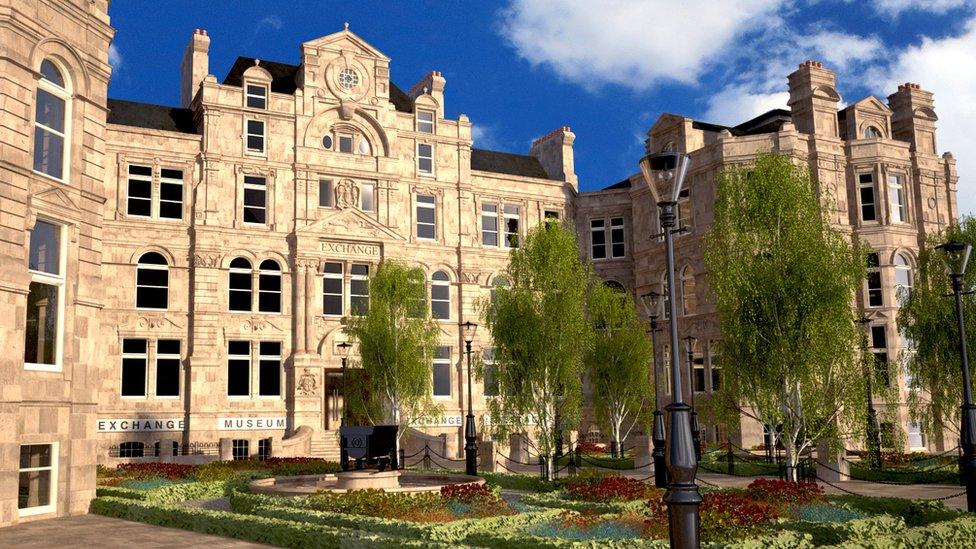
The Coal Exchange, where the first £1m cheque was signed, has reopened as a hotel in Mount Stuart Square
But Cardiff Bay's revamp has not been without its critics.
In 2012, award-winning planning consultant Adrian Jones stated it was a contender for the "worst example of waterside regeneration in Britain".
Writing in the Bevan Foundation Review, external, he said its regeneration was a "dumb plan" which lacked any "coherent urban structure, of real streets or worthwhile public spaces".
He claimed the bay had turned its back on the existing Butetown community and said much public money had been wasted on "vanity projects" instead of providing much-needed public housing.
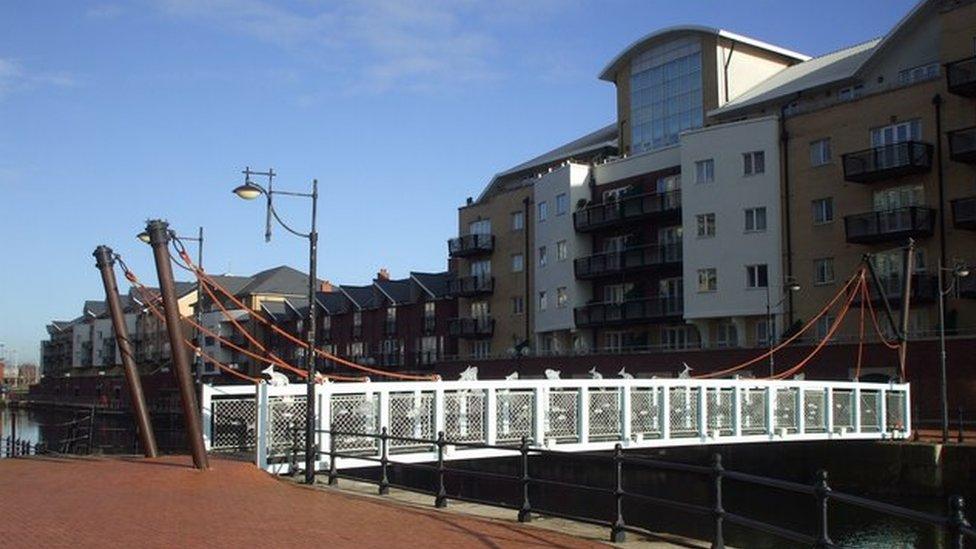
Cardiff Bay is now home to thousands of flats such as Adventurer's Quay
Housing in the bay is another area which has drawn criticism, with some questioning the need for the sheer amount of flats built.
Estate agent Mike Jones fears it has been a victim of overdevelopment, claiming supply has outstripped demand for some years.
"I just feel they're over building, over supplying the apartments and where they feel the market is, I'm not quite sure," he said.
"If you look at property portals you will see where prices have been reduced and properties have been on for months.
"When the market was on a high in 2007, 2008 people were paying £250,000 for a two-bedroom flat and 12 months later they were struggling to sell for £130,000.
"The bay, I think, has been spoiled to a great extent. I think it's such a pity they built so many flats."
Lord Crickhowell said it was "inconceivable" tall buildings could be built on area originally intended to be Cardiff Bay's "oasis"
Indeed, housing is at the centre of the latest controversy with much public opposition to Associated British Ports' (ABP) plans for a 24-storey apartment building behind the Norwegian Church.
Campaigners, including Lord Crickhowell, fear it will result in the loss of parkland and will "look dreadful".
He has now urged a more united approach to the bay's further expansion and called for a more collaborative input from the city council, Welsh Government and land owners.
He said: "There has been a lack of any form of coordinated planning which embraces the land on the south side of the lock or to the east of the lock."
"What they ought to be doing is leading a coordinated approach to planning which involves the Welsh Government."
Rhys Morgan, property manager at ABP South Wales, said the development supported the council's aspiration for high quality regeneration on the waterfront.
He added: "The views of local people have been central to shaping our vision for Dolffin Quay. As a result of feedback, we've made changes to our original plans to increase the size of the new park.
"The scheme will also bring together other key areas undergoing regeneration as Cardiff looks to make its case as a world-class capital city."
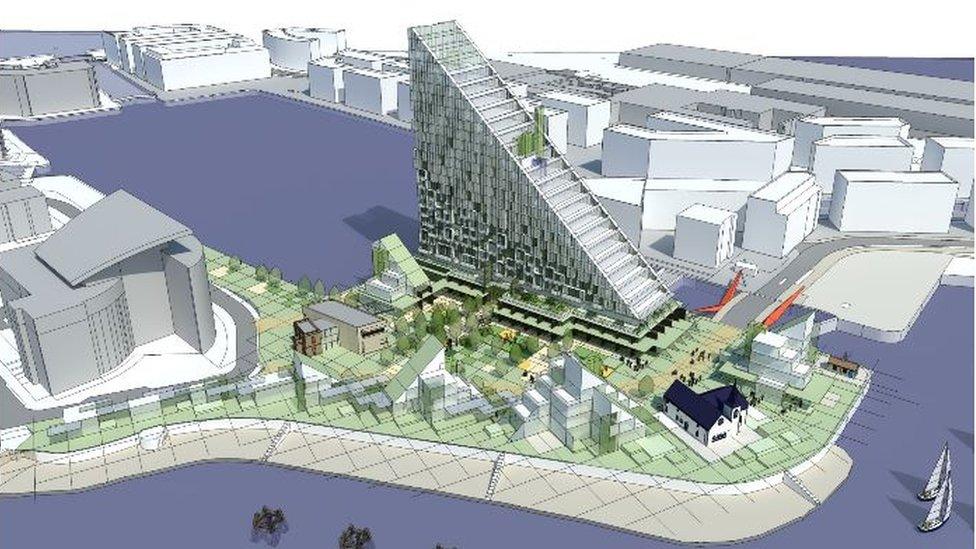
Campaigners fear Dolffin Quay would dwarf the Norwegian Church and result in the loss of parkland
So what lies ahead for Cardiff Bay?
The city council is in the process of drawing up a Cardiff Bay masterplan, external, which - much like the city's local development plan, external - will identify possible areas of development.
It said the plan would aim to maximise regeneration opportunities, balancing community need while maintaining its heritage, maritime history and historic character.
Among the proposals already put forward by developers are a "box city" of hotel apartments, offices and street food venues built out of shipping containers.
- Published25 July 2017

- Published24 August 2013

- Published30 December 2015

- Published11 April 2016

- Published26 October 2016

- Published17 April 2017
